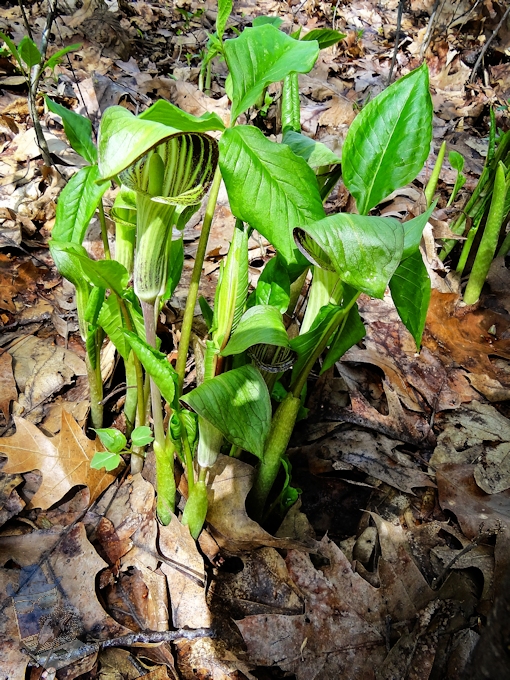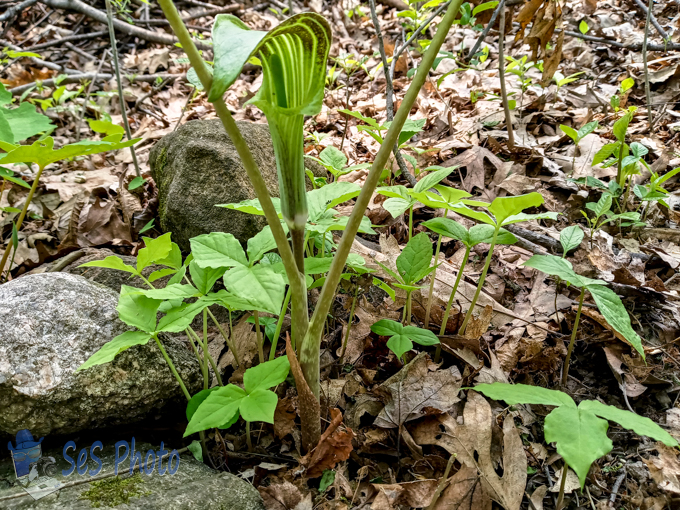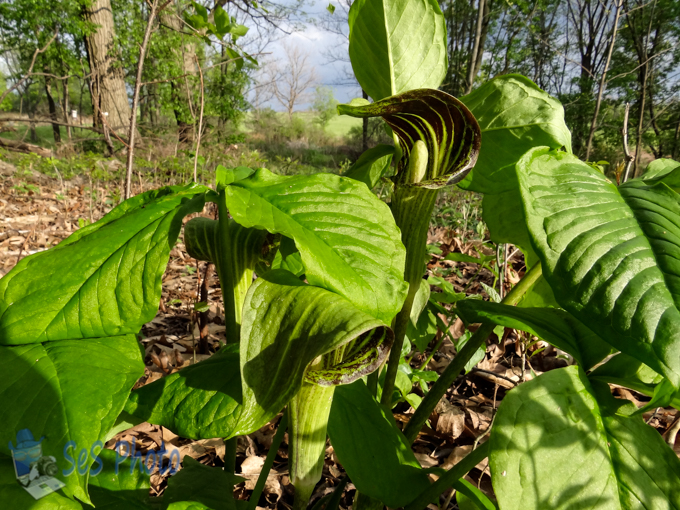Jack-in the-pulpits are an odd looking wildflower and what appears to be the flower, the pulpit, is not the flower. The flowers are actually hidden inside the ‘flower’. The Jack-in the-pulpits are also unusual in that each plant has a particular sex instead of having both female and male parts. If you looked inside the pulpit, you would see either yellowish brown anthers if a male or a cluster of tiny green berries if a female.
What is also strange about this wildflower, is that the plant will change sex from year to year. Since the female has the harder job of making the seeds and getting the seeds ready for the birds to disperse them, if the year was not a good one for storing food to the corm, the plant in the fall will make a bud for a male flower and one leaf. If it had been a good year and the corm is packed with nutrients, the plant produces a bud for female flowers and, usually, for two leaves, to make more sugars by photosynthesis.
So like the many of the birds, the female Jack-in the-pulpits has most of the work and since she does the work, I don’t think it should be called ‘Jack’ in the pulpit but guys do get most of the credit!
Weird Wildflower





